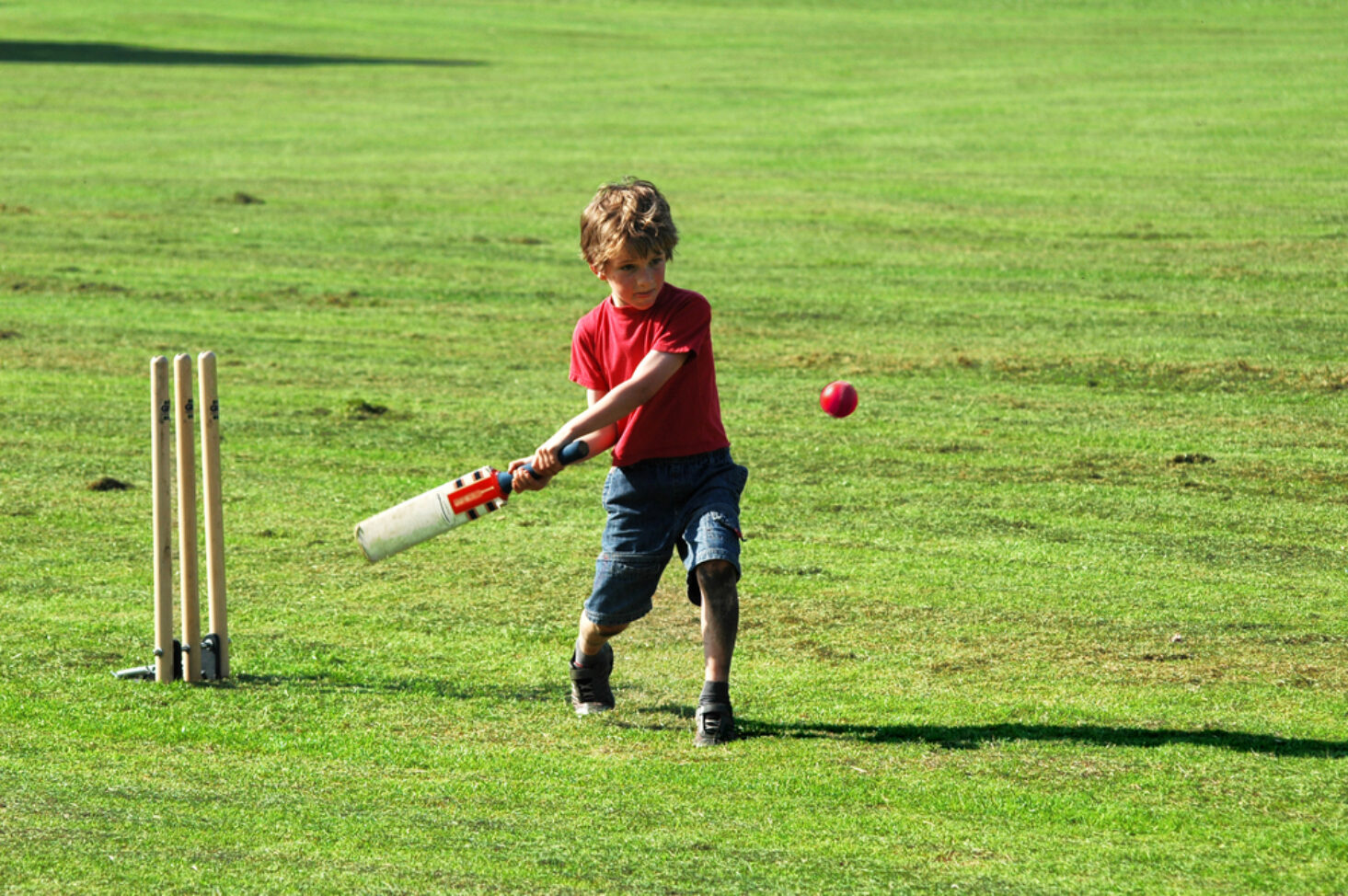
The Incredible Benefits of Playing Cricket for Children
In an era dominated by screens and digital distractions, the allure of the cricket pitch offers a refreshing escape for the younger generation. The benefits of playing cricket for children extend far beyond the immediate thrill of the game. It’s not just about runs, wickets, or the applause that follows a well-played match; it’s about the lifelong lessons and skills imbibed during each practice session and game.
Every sprint, bowl, or batting stance in cricket contributes to a child’s physical well-being. The sport is a comprehensive workout, enhancing cardiovascular health, agility, and hand-eye coordination. As children navigate the field, they also develop crucial motor skills that play a pivotal role in their overall growth.
Cricket is a symphony of teamwork and individual performance. While a player might shine with a stellar inning or a hat-trick, it’s the team’s collective effort that determines the outcome of a match. This balance teaches children the importance of collaboration, discipline, and strategic thinking. The pitch becomes a classroom where leadership, patience, and resilience are learned one over at a time.
As the thrill of the game unfolds, Sixes Social Cricket becomes a unique contributor to the holistic development of children. Beyond the traditional boundaries, this multiplayer batting challenge at Sixes Social Cricket refines not just runs and wickets but imparts invaluable life lessons during each practice session and game.
Embracing cricket also means becoming a part of a global community. Children get exposed to diverse cultures, traditions, and perspectives, fostering a sense of inclusivity and broadening their horizons.
For parents and educators alike, introducing children to cricket is an investment in their future. It’s a sport that molds character, nurtures talent, and prepares young minds and bodies for challenges both on and off the field.
Physical Fitness and Health

Physical fitness and health are crucial aspects for children who engage in the sport of cricket. This particular activity not only provides enjoyment, but also contributes to the overall well-being of individuals.
There are several ways in which cricket promotes physical fitness and health. Cricket aids in improving cardiovascular endurance as it involves running, which effectively strengthens the heart and lungs. This sport helps enhance muscular strength by engaging various muscle groups required for batting, bowling, and fielding.
Cricket also facilitates the development of flexibility through dynamic movements such as stretching, bending, and twisting. This sport fosters coordination, agility, and hand-eye coordination.
By participating in cricket, individuals can also experience improvements in their mental well-being. It helps to reduce stress, anxiety, and depression, while simultaneously enhancing focus and concentration.
Importantly, research highlights that regular participation in physical activities like playing cricket during childhood can significantly contribute to maintaining a healthy weight and reducing the risk of developing chronic diseases later in life.
Development of Motor Skills
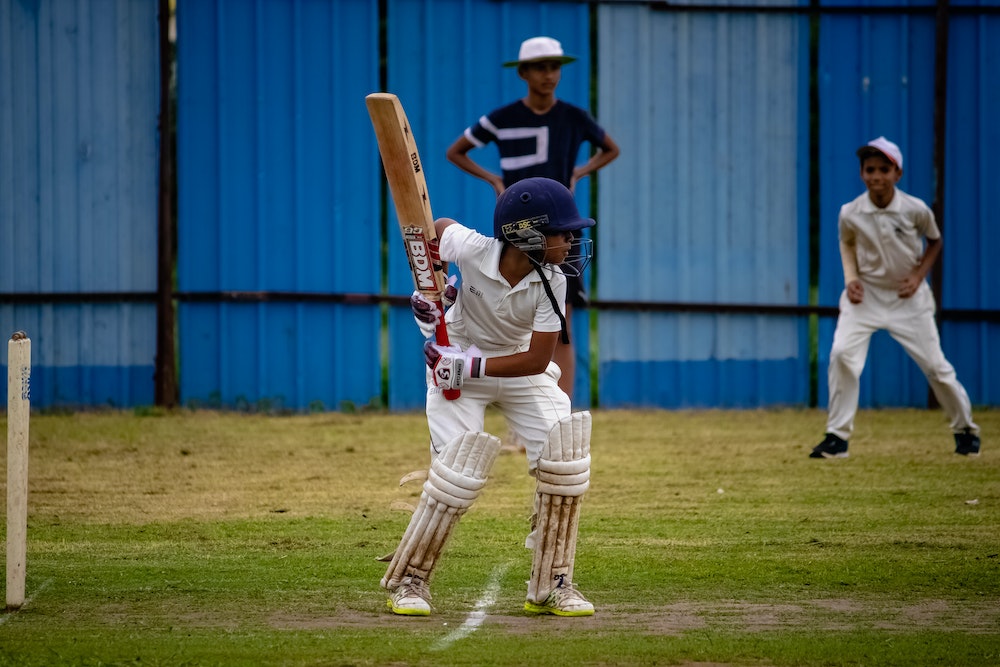
Playing cricket is an excellent way to promote the development of motor skills in children. There are several ways in which cricket can help with the development of motor skills:
- Hand-eye coordination: Batting and catching in cricket require precise hand-eye coordination. Regularly playing cricket can improve this skill, which can benefit children in other sports and daily activities.
- Balance and coordination: Cricket involves activities such as running, throwing, and fielding, which can enhance children’s balance and coordination. These skills are vital for the development of motor skills.
- Agility and speed: Cricket demands quick movements and reflexes. Regular play can improve agility and speed, as children react swiftly and make quick decisions.
- Fine motor skills: Cricket activities, such as gripping the bat, throwing the ball, and tying shoelaces, can help develop and strengthen fine motor skills. These skills are crucial for tasks like handwriting, buttoning clothes, and tying knots.
- Spatial awareness: Cricket requires judging the speed, distance, and direction of the ball, enhancing spatial awareness skills. These skills are important in various sports and daily activities.
- Teamwork and communication: Cricket is a team sport that fosters effective communication and collaboration among players. Through cricket, children can learn teamwork and communication skills.
Engaging in cricket allows children to develop and refine their motor skills in a fun and interactive way. Providing opportunities for children to participate in sports like cricket supports their overall physical development and well-being.
Teamwork and Cooperation

Teamwork and cooperation are vital abilities that children can acquire through playing cricket. By engaging in cricket, children learn how to collaborate towards a common objective and understand the importance of cooperation.
Cricket requires constant communication among team members, promoting effective communication. Players must communicate strategies, field placements, and signals to ensure smooth coordination. Participating in cricket helps children enhance their communication skills and express their thoughts and ideas proficiently.
Cricket also teaches children the significance of trust and support towards their teammates. They learn to depend on each other and provide assistance when necessary, establishing trust and support to nurture a strong team dynamic.
Conflicts may arise in cricket, and learning to resolve them amicably is crucial for maintaining a harmonious team environment. Children can develop conflict resolution skills by finding compromises and understanding different perspectives.
Furthermore, cricket highlights the need for collaboration among team members. Players must work together to strategize and execute game plans effectively, showcasing the importance of collaborative efforts that result in better performance and team success.
Team sports like cricket provide opportunities for children to develop leadership skills. Through cricket, children can learn to take charge, make decisions, and motivate others, thereby acquiring valuable leadership skills that can be applied to various aspects of life.
Research indicates that children who participate in team sports like cricket are more likely to develop essential life skills such as teamwork, time management, and discipline. A study conducted by the Australian Institute of Sport found that team sports significantly contribute to the holistic development of children, promoting their physical, mental, and social well-being.
Discipline and Self-Control
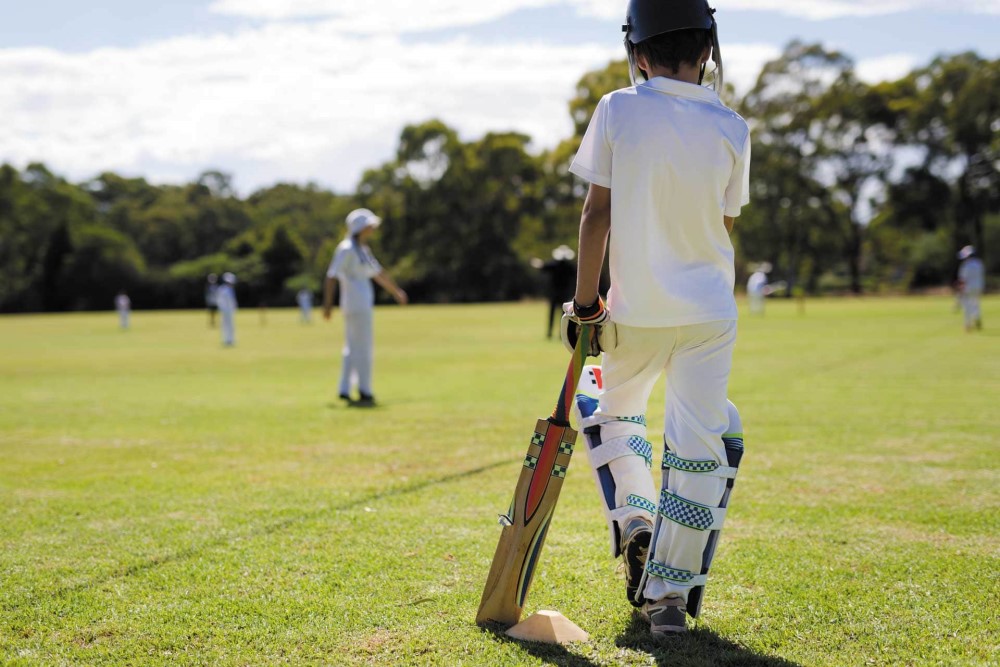
Playing cricket instils discipline and self-control in children, promoting their overall development. Here are some ways cricket cultivates these qualities:
- Discipline: Cricket requires players to adhere to rules, follow a set order, and respect umpires’ decisions. This teaches children the importance of following instructions and showing commitment to the game.
- Self-Control: Cricket requires players to maintain composure and make decisions under pressure. It teaches them to control emotions, think rationally, and make strategic choices. This helps children develop self-control, handling difficult situations both on and off the field.
- Time Management: Cricket matches can last for several hours, requiring effective time management. This includes scheduling practice sessions, balancing academics, and maintaining a healthy lifestyle. Learning to manage time builds discipline and self-control in children.
- Teamwork: Cricket is a team sport that relies on collaboration and coordination among players. Children learn to work together towards a common goal, respect teammates’ contributions, and communicate effectively. This fosters discipline and self-control as they prioritize the team’s needs.
- Commitment: Cricket demands regular practice, dedication, and perseverance. Players develop discipline and self-control by committing to training sessions, improving their skills, and continuously striving to enhance their game.
By participating in cricket, children can cultivate discipline and self-control, benefiting them in various aspects of life. Parents and coaches play a vital role in encouraging and supporting children in developing these traits through the sport.
Problem-Solving and Decision Making
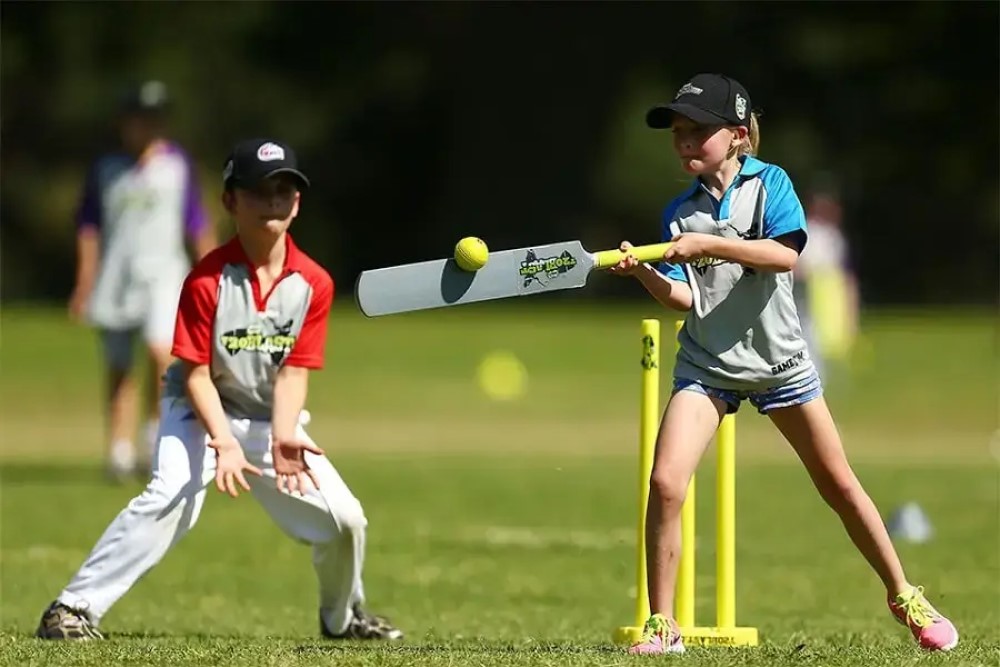
Problem-solving and decision-making are skills that children can develop through playing cricket. Here are some ways playing cricket enhances problem-solving and decision-making abilities:
- Quick thinking: Cricket is a fast-paced game that requires players to make split-second decisions. Players must decide whether to go for a run or not and determine the best fielding position. Cricket helps children develop their ability to think quickly and make decisions under pressure.
- Analytical skills: Cricket involves analysing the game situation and making strategic decisions. Players evaluate the strengths and weaknesses of the opposition, assess pitch and weather conditions, and plan their gameplay accordingly. This enhances children’s analytical skills and their ability to make informed decisions.
- Team coordination: Cricket is a team sport that requires effective communication and coordination among players. Collaborative problem-solving becomes crucial when deciding on tactics, field placements, and strategies. Children learn to work together, discuss options, and make decisions collectively, fostering their ability to solve problems as a team.
- Risk assessment: Cricket involves assessing risks and making calculated decisions. Players must evaluate the probability of successfully attempting a run, taking a catch, or going for a big shot. Through playing cricket, children learn to assess risks, weigh potential outcomes, and make decisions based on calculated risks.
- Adaptability: Cricket often presents unexpected situations and challenges. Children learn to adapt to changing circumstances and modify their strategies accordingly. This adaptability helps them sharpen their problem-solving skills by adjusting their decision-making process to suit evolving game conditions.
Playing cricket provides children with opportunities to enhance their problem-solving and decision-making skills, enabling them to make smart choices both on and off the field.
Mental and Cognitive Development
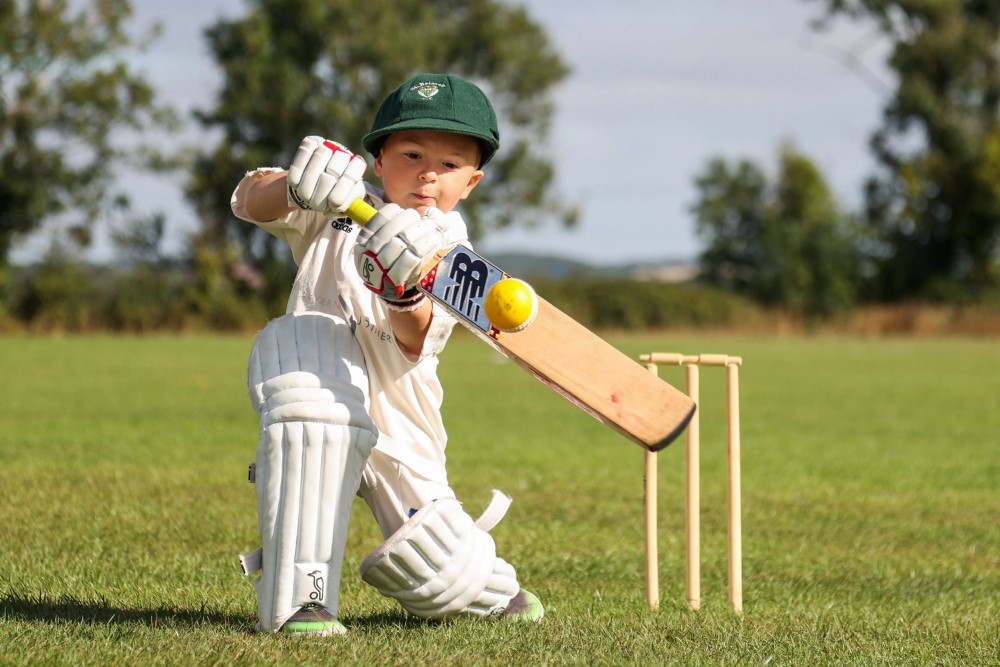
Playing cricket can greatly contribute to the mental and cognitive development of children. This sport has the ability to improve critical thinking and decision-making skills in young individuals.
The key to success lies in maintaining concentration and making quick decisions related to tracking the ball. Through regular practice, children can enhance their concentration skills significantly.
Participating in cricket can also boost memory and recall capabilities.
In addition, the game fosters problem-solving abilities as players are constantly faced with various challenges that need to be resolved promptly.
The interaction within a team and the understanding of each teammate’s strengths and weaknesses also helps in the development of emotional intelligence.
Another advantage of playing cricket is that it provides stress relief and contributes to overall mental well-being.
To fully harness the benefits of cricket for mental and cognitive development, it is important to offer children ample opportunities for participation and practice. It is equally important to encourage critical thinking and teamwork, and create a supportive environment that fosters growth.
Therefore, it is evident that cricket offers significant advantages for children’s mental capabilities while also allowing them to enjoy the game and improve their mental skills.
Social Interaction and Communication
Social interaction and communication are crucial for a child’s development. Playing cricket offers opportunities for children to enhance their social skills and communication abilities. Here are ways in which cricket promotes social interaction and communication:
- Teamwork: Cricket requires players to work together towards a shared goal, which promotes collaboration, cooperation, and effective communication with teammates.
- Leadership: Within a cricket team, children can assume leadership roles such as becoming the captain, developing leadership qualities, and the ability to communicate instructions and strategies to fellow players.
- Sportsmanship: Cricket teaches the importance of fair play, respect, and good sportsmanship. It fosters positive relationships on and off the field by encouraging respectful communication and interaction with opponents.
- Verbal communication: During a cricket match, players need to communicate to coordinate movements and strategies. Effective verbal communication is crucial for calling catches, running between the wickets, and making field decisions.
- Non-verbal communication: Body language and non-verbal cues play a significant role in cricket. Fielders rely on silent communication to coordinate positions and make quick decisions, cultivating observation skills and the ability to understand non-verbal cues.
There was a young cricket player named Ethan who struggled with shyness and expressing himself. Through cricket, he gained confidence in his communication skills. Interacting with teammates and communicating on the field helped him open up and express his thoughts more freely. His teammates encouraged and supported him, creating a positive and inclusive environment. Cricket allowed Ethan to overcome social inhibitions and establish meaningful connections, improving his social interactions both within and outside the cricket field.
Leadership Skills

Leadership skills are essential in the development of a child when participating in cricket. Cricket helps foster leadership skills in various ways. First, it encourages quick decision-making on the field, where children learn to analyze situations, evaluate options, and make prompt decisions to guide their team.
Effective communication is also vital for successful teamwork, and on the cricket field, children learn to communicate with teammates, giving instructions, providing feedback, and coordinating strategies to achieve common goals.
Cricket emphasizes the importance of collaboration and working together towards a shared objective, teaching children the value of teamwork and supporting each other. Strategic thinking is another crucial aspect of cricket, as it involves analyzing the game, devising tactics, and adjusting strategies as required.
Children learn to anticipate the opposition’s moves and strategize accordingly. Cricket provides opportunities for children to lead by example through their performance on the field, sportsmanship, and ability to motivate and inspire teammates, making them role models for others.
Active participation in cricket enhances children’s leadership skills by helping them make decisions, communicate effectively, work as a team, think strategically, and lead by example. These skills are not only valuable in sports but also in academics, work, and personal relationships.
Stress Relief and Emotional Well-being

Playing cricket has significant benefits for children in terms of stress relief and emotional well-being. Engaging in cricket activities helps children release endorphins, which are natural mood boosters, thereby reducing stress and improving emotional well-being. Cricket is a team sport that enhances social connections and requires collaboration and communication.
By participating, children develop friendships, build strong bonds with teammates, and improve social skills, all contributing to better emotional well-being. Cricket cultivates resilience as it involves facing challenges and overcoming them as a team. This helps children develop the ability to handle stress and setbacks effectively, thereby promoting emotional well-being.
Physical activity, such as playing cricket, has been proven to reduce anxiety in children. The intense focus required during a game helps distract from worries and negative emotions, calming the mind and further contributing to stress relief and emotional well-being.
Playing cricket improves self-esteem as children achieve personal goals, contribute to the team’s success, and receive recognition for their cricket skills. This positive self-perception directly impacts their emotional well-being.
Playing cricket has numerous benefits for children in terms of stress relief and emotional well-being.”
How to Get Started with Cricket?
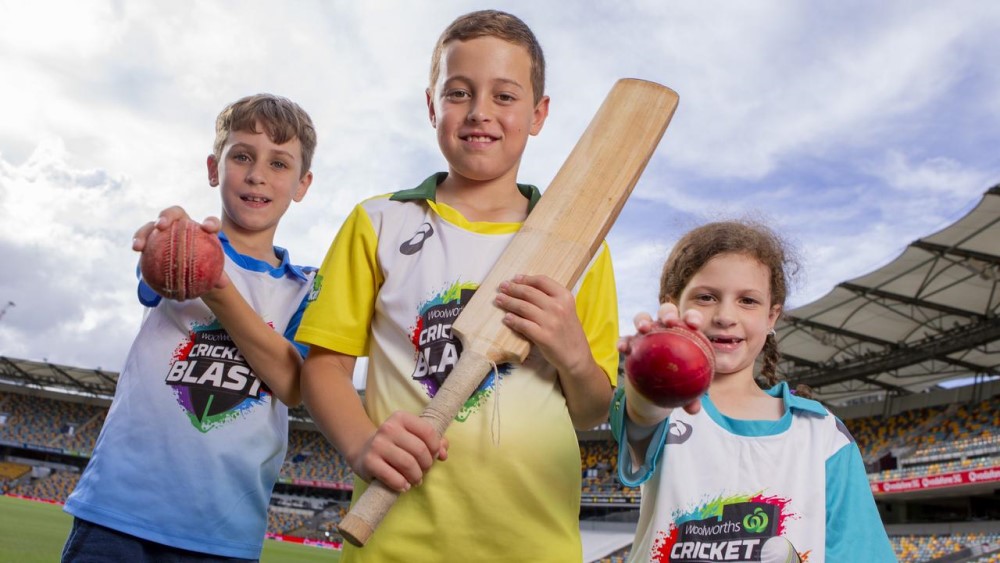
To get started with cricket, follow these steps:
1. Familiarise yourself with the fundamental rules: Understand the positions, scoring, and gameplay.
2. Gather the necessary equipment: Buy a cricket bat, a tennis ball or cricket ball, stumps, and bails from sports shops or online.
3. Find a suitable playing area: Look for a secure and spacious location like a garden, park, or cricket ground.
4. Form a team or find a group: Gather friends, family, or join a local cricket club to find fellow players.
5. Learn bowling techniques: Practice accurate bowling techniques such as fast bowling, spin bowling, or medium pace bowling.
6. Master batting skills: Learn proper technique including grip, footwork, and shot selection, and practice hitting the ball with the cricket bat.
7. Practice fielding: Develop skills in catching, throwing, and stopping the ball, which are crucial in cricket.
8. Understand scoring: Get familiar with scoring runs and dismissals, and learn the different ways a player can get out.
9. Join a local cricket league or club: Consider becoming a member of a league or club to participate in matches and enhance your cricketing experience.
What Are the Basic Rules and Equipment Needed for Cricket?

Cricket, often referred to as the “gentleman’s game,” is steeped in tradition and requires a unique set of equipment and rules. For those new to the sport or looking to refresh their knowledge, here’s a breakdown of the fundamental rules and equipment:
Teams: Cricket is played between two teams, each comprising eleven players.
Playing Area: The game unfolds on a rectangular field known as a cricket ground, typically measuring around 150 metres in length and 22 yards in width.
Wicket: Central to the game is the wicket or cricket stumps. It consists of three vertical stumps, made of wood, standing 28 inches high and spaced equidistantly. Resting on top of these stumps are two horizontal bails. The objective for the bowler is often to dislodge these bails, resulting in the batsman’s dismissal.
Ball: The cricket ball, hard and robust, is crafted from cork and encased in leather. It weighs between 155.9 and 163 grams, boasting a circumference of 8.81 to 9 inches.
Bat: The cricket bat, predominantly made of willow wood, features a long handle and a thick blade. Regulations dictate that the blade should not exceed 38 inches in length or 4.25 inches in width.
Fielding Positions: A myriad of fielding positions exists in cricket, each with its strategic importance. These include the wicket-keeper, slip, gully, point, cover, mid-off, mid-on, mid-wicket, square leg, and fine leg.
Scoring Runs: Runs are the currency of cricket. Batsmen score them by striking the ball and running between the wickets. Each successful run between the wickets adds to the team’s total.
Dismissals: A batsman’s stay at the crease can end in various ways, including being caught, bowled, stumped, run out, or adjudged leg before wicket (LBW).
Overs: Matches are segmented into overs, with each over comprising six legal deliveries bowled by a single player.
Umpires: Ensuring the game’s integrity and fairness are two on-field umpires. Their decisions, often signaled with unique gestures, play a pivotal role in the match’s outcome.
For novices and enthusiasts alike, understanding these basic rules and ensuring the right equipment is in place is paramount. With this foundational knowledge, players can immerse themselves in the sport, relishing every run, wicket, and boundary.





